

Creation of a website dedicated to Culture in Monaco
Used technologies


Used technologies
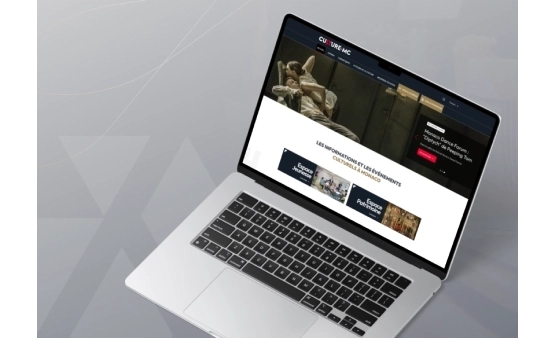
For a long time, Monaco did not have a centralised platform dedicated to promoting its rich cultural scene. Events, exhibitions and artistic initiatives were scattered across various websites and social networks, limiting access for the general public. With the rise of websites and online information, the need fora site dedicated to culture quickly became a priority.
The aim of the project was to create a platform that would enable residents and visitors alike to easily discover the Principality's events, news and cultural heritage.
The new culture.mc site was designed to meet a number of key challenges: making culture more accessible, centralising information for different audiences, and providing a fluid user experience.
We wanted to use a modern, flexible CMS that would guarantee good content management (front/back). With this in mind, it was decided to set up two separate back-offices:
This separation guarantees structured, autonomous management of information and centralised control of published content. It offers flexibility for contributors, who can showcase their events without an intermediary.
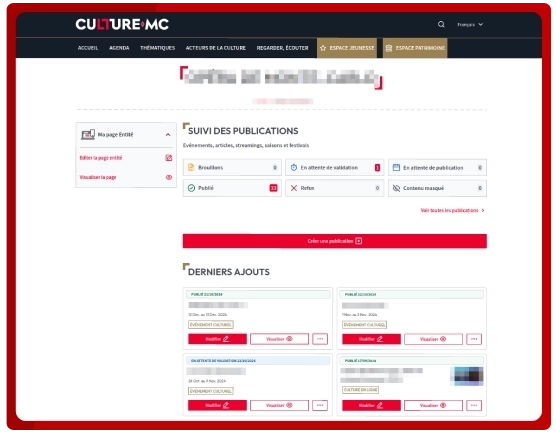
The main administration area, developed using Ibexa Experience, enables the Direction des Affaires Culturelles (DAC) to supervise all content before it is published. A validation workflow has been set up so that each event or news item submitted by contributors goes through 3 phases:
This process ensures that the content published complies with the quality and relevance standards defined by the DAC, and thus reinforces the consistency of the information published on the Culture site.

Each cultural player has a dedicated space to help them manage their content. In this personalised space, users can manage all their news and events independently. A customised dashboard provides a real-time view of the publication workflow, enabling users, for example, to check the status of articles that have or have not been validated. This feature enables the Cultural Affairs Department to have an overview of each piece of content before it is published.
A dynamic step-by-step form has been introduced to simplify the process of adding content. The fields in the form are automatically adjusted according to the type of object to be created, enabling information to be segmented and structured clearly and precisely.
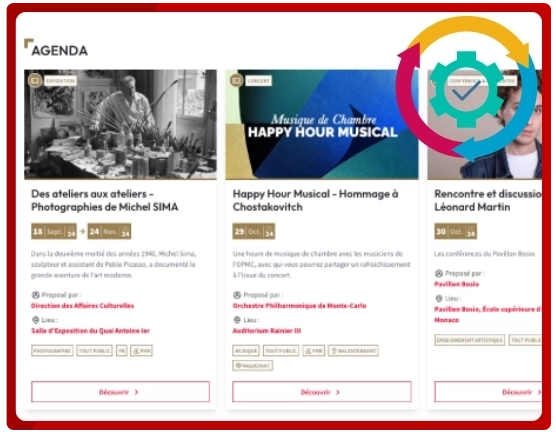
The culture.mc website is synchronised with a centralised database of the Principality's cultural events, known as the Data Lake. Every day, using an API, Culture.mc automatically retrieves relevant events from the Datalake, defined in collaboration with the Direction des Affaires Culturelles (DAC).
For example, when the Théâtre Princesse Grace schedules the play Un barrage contre le Pacifique, the event is added to the Datalake and then imported into Culture.mc, where additional information can be added if required.
In turn, events created or modified on Culture.mc are 'pushed' to the Datalake to be available on other partner platforms, such as YourMonaco or VisitMonaco.
Using the datalake means that you can :
Request a personalised quote for the creation of your website now and get a detailed cost estimate.

The culture.mc website includes a diary listing all the cultural events taking place in Monaco. This key space comprises a filter module on the left and search results on the right.
The filters have been designed with the user in mind. Users can define dates, select accessibility criteria, choose a theme, etc. We have specifically pre-configured 3 filter buttons to display events at key times (today, this weekend, over the next 7 days).
If a new cultural institution, type of event or cultural theme is added by the DAC, the changes will be added automatically to the search filters.

The culture.mc website has been designed to offer an immersive user experience thanks to a modern design and engaging animations. The interface has been designed to be intuitive and easy to navigate, enabling users to discover cultural events with ease and pleasure.
Specific design elements have been included to create an immersive user experience. Mouse-over animations and scroll effects draw the user's attention to certain key areas of the site (home, themes).
UI-UX tests were carried out with certain users by the UX team of the Government Digital Services Directorate.
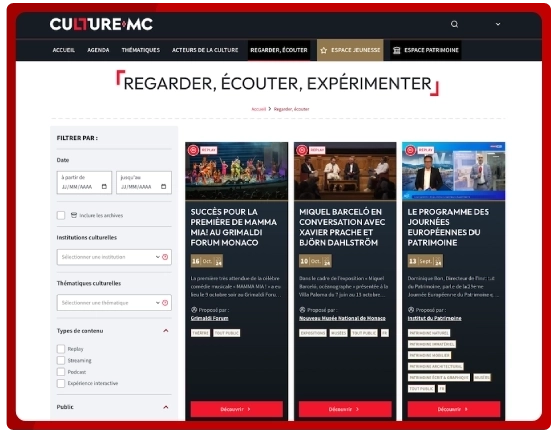
The culture.mc site allows users to access dedicated pages to watch videos or listen to audio content directly online.
We have enabled the DAC to insert Youtube embeds within the site. For the moment, only the Youtube format is supported by the site.
This feature enriches the user experience with simple, direct access to a variety of multimedia formats. It offers another perspective on cultural events in Monaco.

The culture.mc website features a dynamic map enabling users to discover the Principality's various cultural venues. The map is integrated into each event page, in the 'Practical Information' section. An interactive panel on the left displays a list of all the venues, with a search bar for easy navigation. By selecting a location, the map automatically refocuses on the corresponding point, enhancing the search experience.
We managed the display of location markers using the Leaflet tool. Each location is defined in the back office with precise coordinates (longitude and latitude), either by direct selection on the map or by entering an address.

The culture.mc project has benefited from substantial work on natural referencing (SEO) to ensure the site's visibility from its official launch on 07/11/24. Every detail has been taken care of:
Three weeks after going online, the culture.mc site was already appearing on the first page of search results for queries such as'Culture in Monaco' or'cultural event in Monaco'.
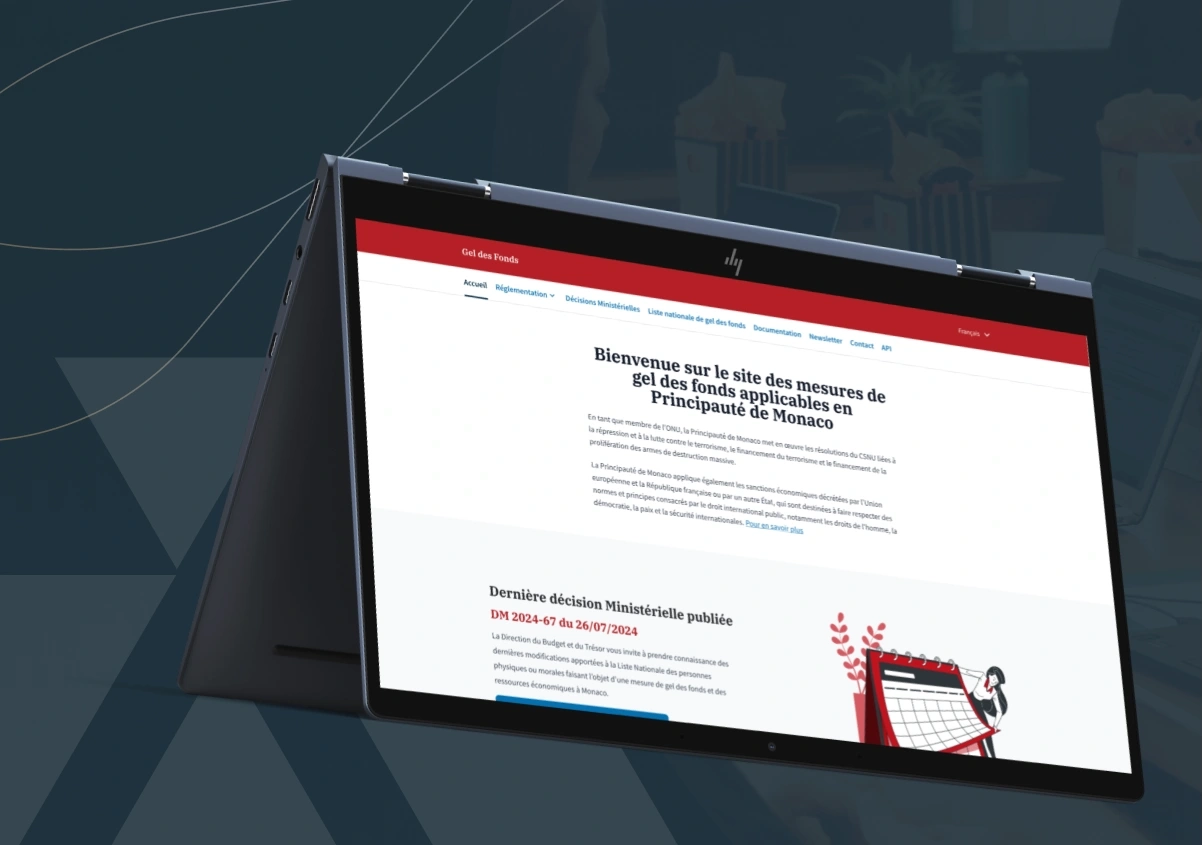

Corporate
Find out more about the project to develop a website to manage measures to freeze funds for the Government of Monaco. A centralised platform designed to optimise the management of financial sanctions.
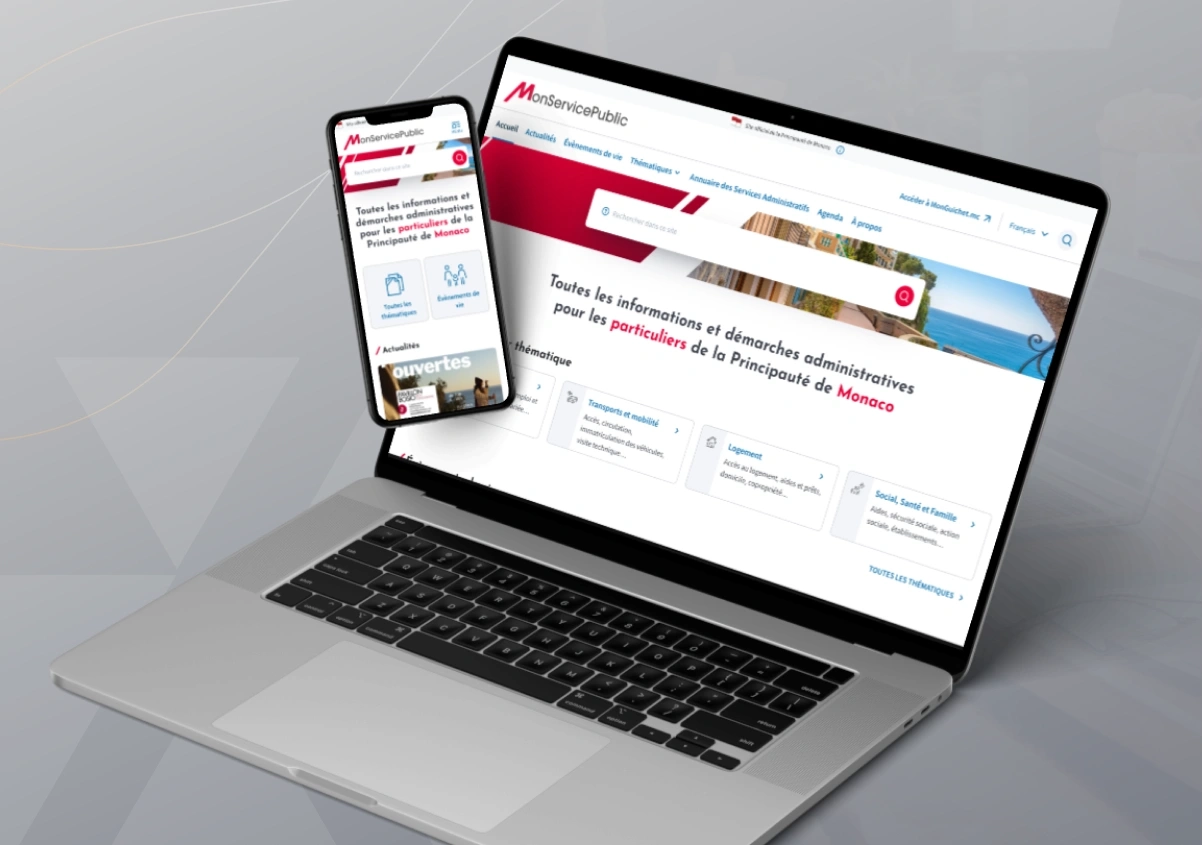

Corporate
Find out more about the solution we provided to the Government of Monaco to modernise the public services interface. A project combining redesign and migration.